Tag: trading stocks
What Makes Traders Succesful In Online Stock Trading
Make no mistake about it, there are several different strategies and techniques that can be applied to make money in the markets with online stock trading. Although they may have different strategies, successful traders do share many things in common even if how they get their results varies. Too often, newbie traders are so

focused on the strategy, that they think it’s the end all be all, but that’s simply not true.
First, successful traders have a plan. They’ll go into a trade measuring what their potential profit and losses might be, before they place the trade. This includes their decision on how they will enter the trade, they might go all in or scale into the position. But the most important takeaway is they have a plan.
Second, they have the discipline to stick with their plan. The discipline comes from repetition, studying similar setups, or even backtesting and forward testing. They have studied past trades and identified what has worked, what currently works and what is not working at the moment. In other words, they are prepared.
If you’re unsure of your strategy, don’t have an outline of your exit, you’re more likely to make emotional decisions when things don’t workout your way. You might panic and not capitalize, or even worse, end up doing something dumb and losing money online stock trading.
Successful traders do not take losing personal. Again, they look at the markets in probabilities. Basically, they’re looking for high probability setups. If it doesn’t work  out, they’ll access their trading plan and see if there is anything they could have done differently. But just because a trade doesn’t work out, it doesn’t mean they will stop trading the strategy if they believe it’s still effective. Sometimes unexplainable things do happen in the market, and that is something you have to learn to be OK with.
out, they’ll access their trading plan and see if there is anything they could have done differently. But just because a trade doesn’t work out, it doesn’t mean they will stop trading the strategy if they believe it’s still effective. Sometimes unexplainable things do happen in the market, and that is something you have to learn to be OK with.
With that said, they focus on their strengths first and work on their weaknesses second. For example, Nike first came out as a shoe company that focused on runners. After they built that side of the business up, they moved onto creating sneakers for other sports. Eventually they expanded to apparel and a ton of products.
That is a solid approach to becoming a successful trader with online stock trading. Develop one or two bread and butter trades and then try to expand to other strategies. Don’t try to do everything at once. Also, don’t get frustrated if you can’t make money trading a certain way, maybe that doesn’t fit your personality or risk tolerance.
Successful traders spend a lot of time reviewing their performance, journaling and searching for methods to improve. Their goal is to scale up their operation to the highest level it can reach. They take a business approach to trading and focus on risk vs. reward. A special emphasis is placed on risk management. What good is your online stock trading if you win 5 straight trades and let one wipe all those gains away?
As you can see, risk management is extremely important. Some traders in online stock trading can trade the similar strategy, but one can have superior results based on how they manage risk, control their emotions, and execute the game plan.
It’s not always about your strategy, it’s sometimes more about the intangibles that will make you into a successful trader in online stock trading.
Should You Pay A Subscription for Good Penny Stocks?
Let’s face it, there are vultures in every industry – including good penny stocks. You see it a lot in the diet and health industry, companies promoting fads, in hopes you take the bait and bite. You might catch an infomercial on the weekends on that can’t-miss money making opportunity. When it comes to investing and trading, there  are hoards of individuals pitching you indicators, strategies, and alerts.
are hoards of individuals pitching you indicators, strategies, and alerts.
Does it ever make sense to sign up and pay for a subscription service pertaining to good penny stocks?
Before I share my opinion, let’s think about it for a second. The more competition, the more efficient the market is and the lower the profit margin. For example, let’s say you are at the supermarket and you’re interested in buying a package of hot dogs. You sift through the aisle and see that there are a number of different brands offering hot dogs. You’ll also notice that prices are relatively comparable. The reason being competition.
Now, imagine that you’re at Yankee Stadium and you’re hungry for a hot dog. You go to the vendor and notice that the price of a hot dog is the same price for 15 hot dogs at the grocery store.
Sounds crazy right?
Well, Yankee Stadium has no competition, you either buy their hot dog, or you don’t buy a hot dog at all. They have no competition, and therefore, they can set prices however they want. With that said, they have a very high profit margin.
Now, imagine that there is a trading strategy for good penny stocks that does very well in the market, meaning that it yields a good profit and has a high probability of  being successful. As more traders pick up on this, competition rises and profits become smaller and smaller. To compensate, traders will have to lever up just to get the same type of returns they were getting before. Eventually there will be too many traders in and the strategy has minimal effectiveness.
being successful. As more traders pick up on this, competition rises and profits become smaller and smaller. To compensate, traders will have to lever up just to get the same type of returns they were getting before. Eventually there will be too many traders in and the strategy has minimal effectiveness.
With that said, I’d be very cautious on anyone selling special indicators or signals. On the other hand, trading rooms, research, and even stock picking services can still be useful.
At the end of the day, there is only so much you can keep your eyes on, in respect to the market. The more qualified eyes, the better. You can learn a lot from good traders, as well as bad trader. Working on idea generation is one of the most important activities as a trader. You see, after a while, some strategies simply stop working, if you don’t work on ideas you’ll eventually be irrelevant. That’s why you’ll hear a lot of traders from the 1990s and 2000s struggle today, they never made the proper changes and are now obsolete – completely out of good penny stocks.
All in all, idea generation services are worth it, even if they are really bad in their picks. Because if they are awful, you can take the other side of their trades and be profitable. On the other hand, services that offer you how to trade or sell you a signal or strategy, the more users they get, the less effective they’ll eventually be.
Most professional traders trade in teams. They share their ideas with a select group of other traders they trust. Just make sure if you do decide to pay for a service, it’s something that fits your budget. Most services offer trials so make sure to test a bunch out before deciding what fits your trading style the most when trading good penny stocks.
Use Volatility To Trade Top Penny Stocks
They say volatility creates opportunities in trading top penny stocks. For those not familiar, volatility is something that is attempted to be measured, the most generally accepted method of measurement is the standard deviation. The standard deviation is expressed in annualized % terms, and tell us how much prices deviate from the mean.
In other words, standard deviation is a statistic that measures the amount of 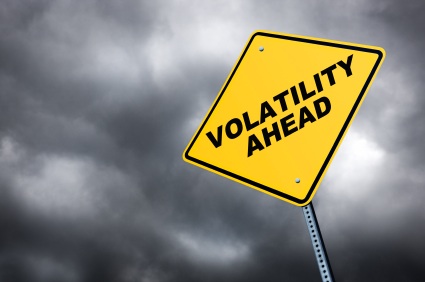 variability around the mean.
variability around the mean.
Let’s say the price of a stock is trading at $10, and has a historical volatility of 30%. As mentioned earlier, standard deviation is measured in annualized terms. We would take the stock price and multiply it by 0.30, which gives us the number 3.
A one standard deviation move encompasses about 68% of the normal distribution. In this example it means that there will be a 68% chance that the stock price will be within $7 to $13 on the year. On the other hand when trading top penny stocks, to get a two standard deviation, we simply multiply our first figure by two. In this example it’s 6.
According to our historical volatility, there is a 95% chance the stock price will be trading within $4 and $16 on the year.
Now, we mentioned that historical volatility is expressed in annualized terms. However, you can convert that into a daily volatility if you wished when trading top 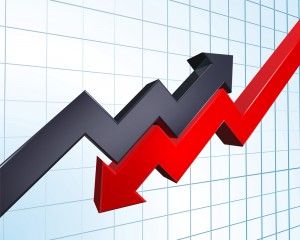 penny stocks. In order to translate the annualized volatility, take the number of trading days in the year and square root them. Generally there are around 252 trading days in the year, when you square root that, you get 15.87.
penny stocks. In order to translate the annualized volatility, take the number of trading days in the year and square root them. Generally there are around 252 trading days in the year, when you square root that, you get 15.87.
So, if we have an annualized volatility of 30% we take that number and divide it by 15.87. In return, we get a number of 1.89%. That means on average we can expect it move within a +/- 1.89% on any given day.
In general, volatility is mean reverting. Periods of high volatility are usually followed by periods of lower volatility, and vice versa. Traders can use this information to size their top penny stocks trades better.
For example, let’s assume volatility has expanded. If you’re aware of that, you might want to trade smaller to compensate for the wilder swings. In addition, under higher volatility, you can make or lose with less shares because the price swings are greater.
In most cases, volatility expands when stocks experience downward pressure. The move towards the downside is usually quicker, when compared to when stock prices  rise. When stock prices rise, they tend to grind up.
rise. When stock prices rise, they tend to grind up.
With that said, you can use volatility to gauge fear and greed in the market when trading top penny stocks. The most commonly used metric for the overall market is VIX. The VIX more or less tells us about the volatility in the S&P 500 index. A low VIX means there is little fear in the market, a higher VIX means there is fear.
In summary, knowing the volatility of a stock can help in your position sizing. You might be able to use those numbers to gauge sentiment in the stock as well. For a bigger picture perspective, the VIX can be used to measure gauge fear and greed in the overall market when trading top penny stocks.
How To Profit From The Short Squeeze Trading Stocks
On November 8th, 2016, The US Presidential Elections were held. Early the next day, it was announced that Donald Trump was the winner. The following day, we saw a number of sectors trade significantly higher (and some lower), based on what investors trading stocks thought it would benefit/suffer under the new President-elect.
Clearly, an event of this magnitude is not a one-off. A shift in policy changes will have a longer term effect on certain stocks. With that said, some sectors that shined that following day were in the infrastructure, pharmaceutical, and banking space. It was believed that the President-elect would cause an inflationary effect to the markets.
One company that was believed to have benefited from this regime change was Top Ships Incorporated (TOPS), it closed the week up more than 30%, largely off the election results. However, the stock had some other interesting information pertaining to it. A large percentage of the shares were sold short and still not covered by those trading stocks.
In other words, investors borrowed shares from their broker to sell, in hopes that prices drop so they could buy them at a lower price and cover. In this case, we had a situation where the stock reacted to positive news, in addition; traders, who were short the stock, were causing more pressure because they were buying shares to cover their short.
These two factors can cause a stock price to rise dramatically.
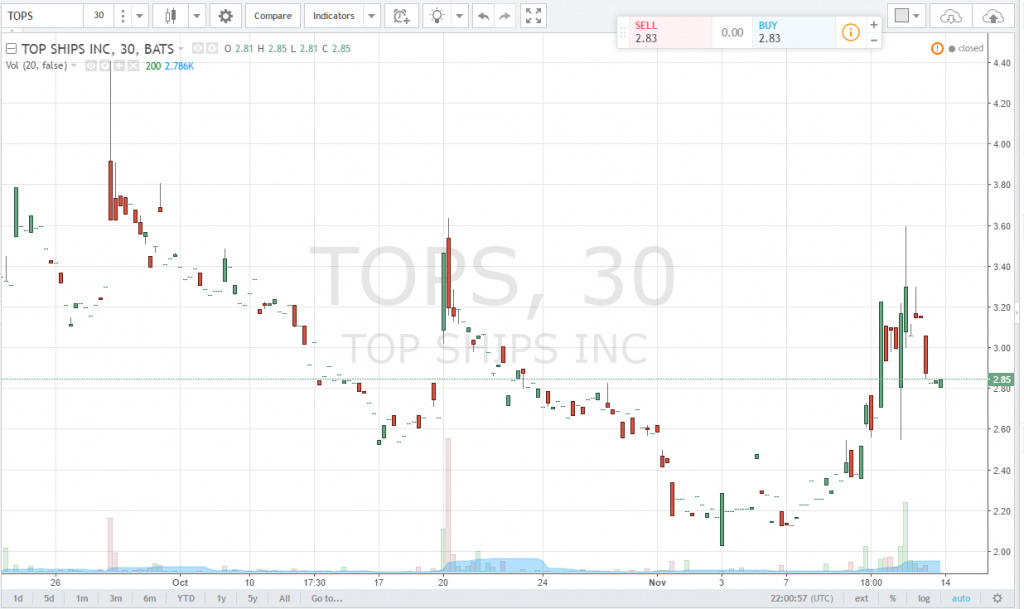
(chart: www.TradingView.com)
In this example, the stock price went from about two bucks to as high as $3.50 in just a matter of days.
If you’re a trader trading stocks, how can you use this information?
Well, let’s you traded mean reversion, and saw that the price of a stock normally trades in a $.50 range, and today for whatever reason it’s up $4. Without any other consideration, you decide to short and it ends up not working in your favor. Now, if you looked at the short interest of the stock, and noticed that it was relatively high, maybe you would have laid off on the short idea.
On the other hand, if you’re taking a long position, it might make more sense to size these trades smaller and play for a larger than normal move. A short interest stock combined with a positive catalyst can really send the stock price flying. Just being aware and be help in and of itself.
Is this information readily available when trading stocks?
The answer is yes, and for the most part, you can find a lot of it for free.
For example, if you hop on over to finviz.com, you can find important information like shares outstanding, shares float, and short float %.
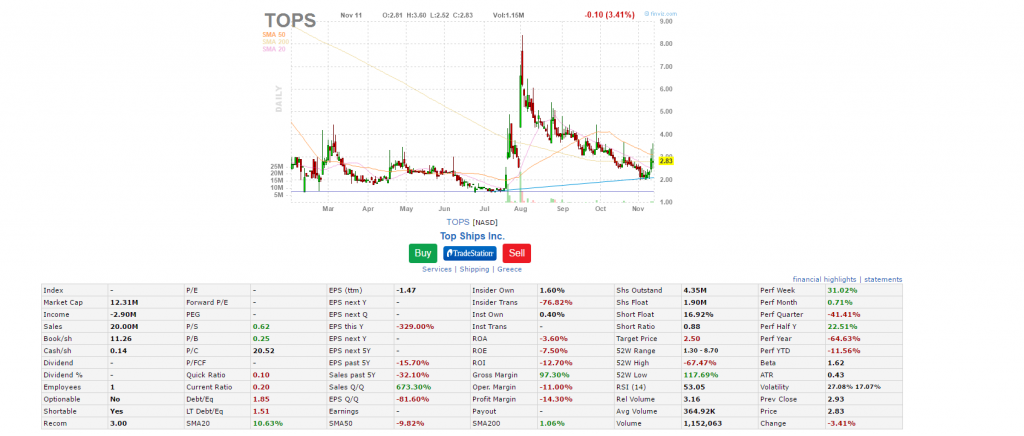
(source: finviz.com)
In this case, Top Ships had a short float ratio of 16.92%. However, it’s best to use more than one source. For example:
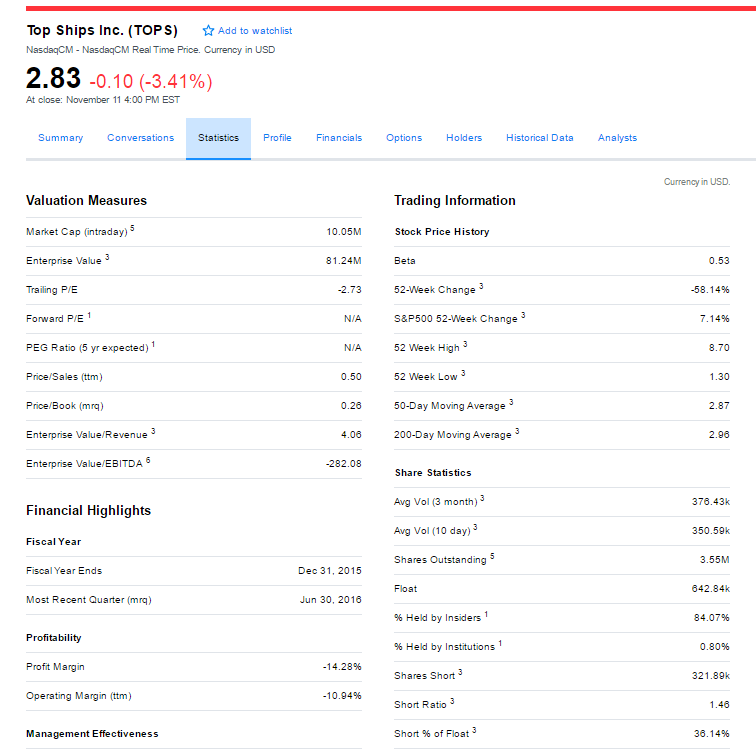
According to YAHOO! Finance, the short interest % on this company is 36.14%.
In a situation like this, where the two sources have a wide margin, check out another source.
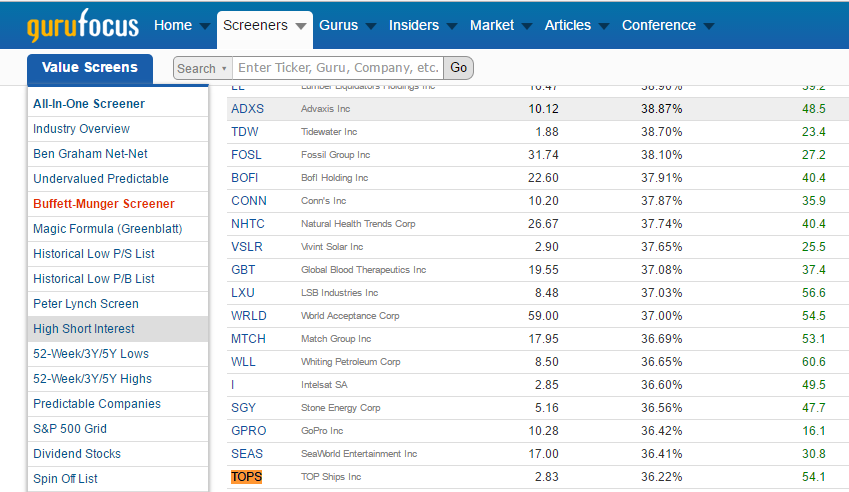
(source: gurufocus.com)
Being aware of a potential short squeeze can make you a lot of money or even save you a lot of money. The key is to be ready and prepared when trading stocks.
